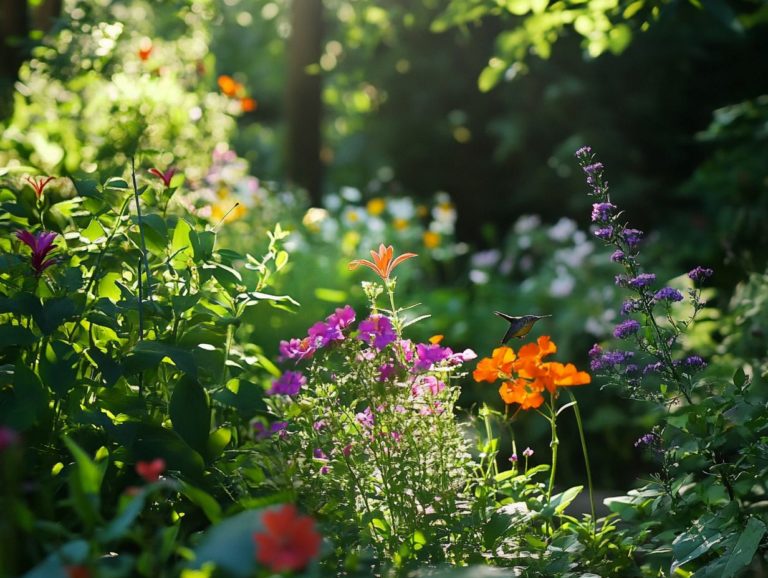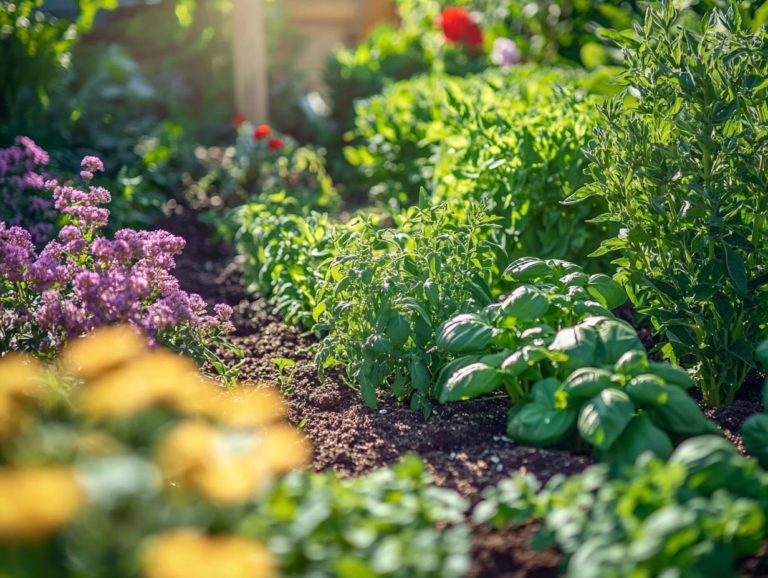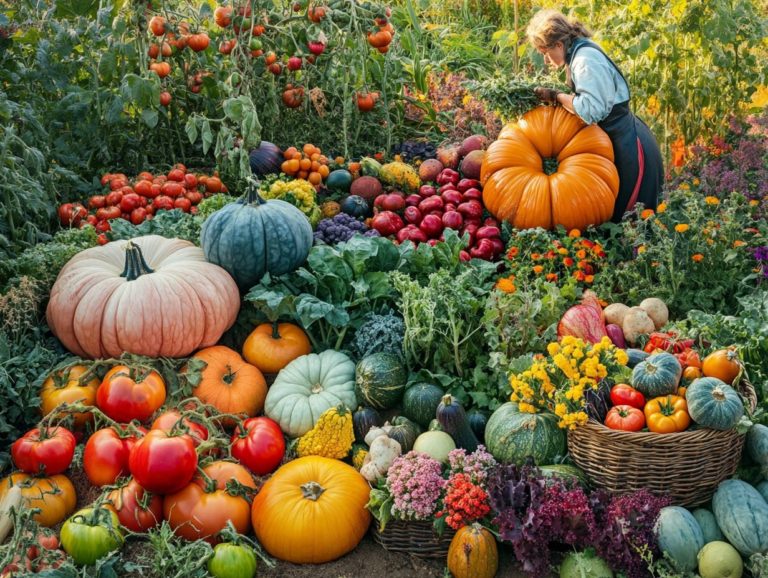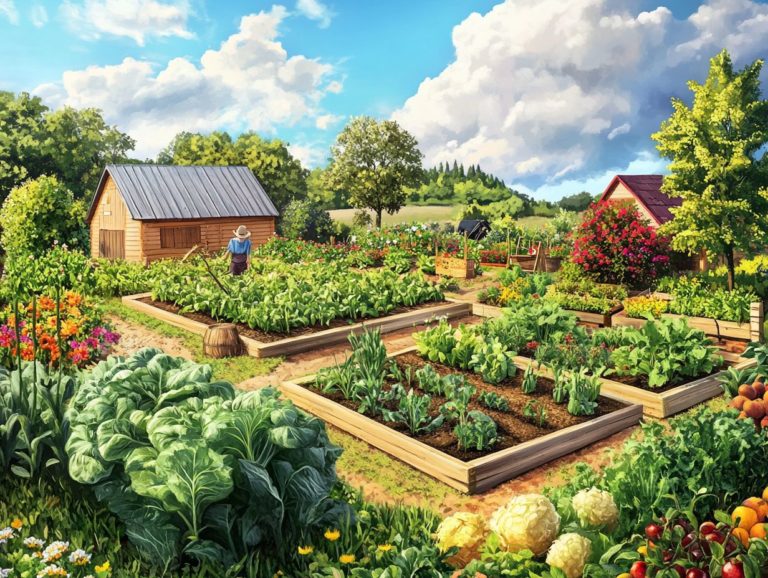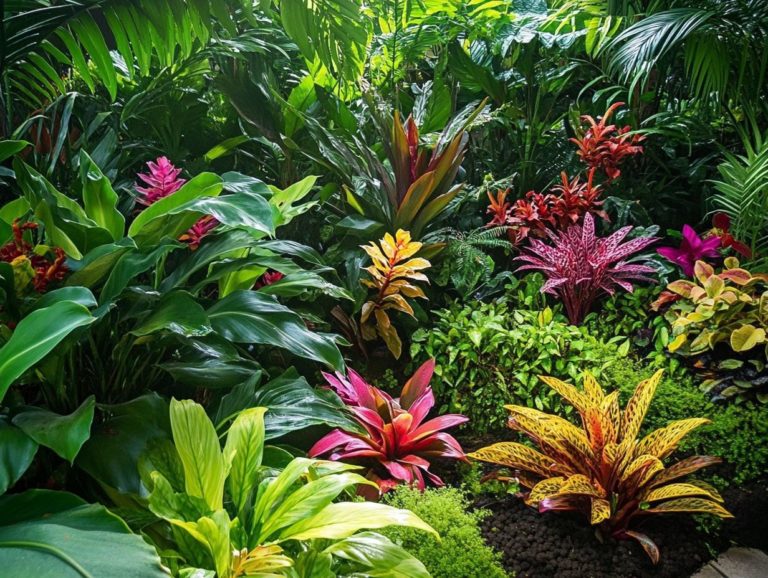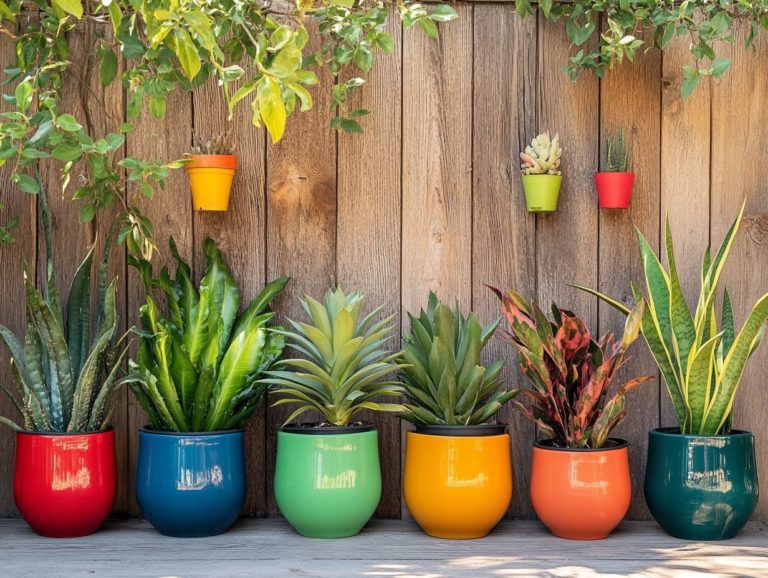“5 Best Plants for Small Urban Gardens”
In today s bustling urban landscape, having a garden can be a thrilling reality you create today! With a touch of creativity and the right selection of plants, you can transform even the smallest balcony or patio into a vibrant green oasis.
Let s dive into the five best plants that are perfect for small urban gardens, ranging from aromatic herbs to delightful dwarf fruit trees. You ll also find practical tips on maximizing your space, essential tools, maintenance, and innovative ideas to enhance your urban gardening experience.
Whether you re a seasoned gardener or just stepping into this green adventure, these insights will motivate you to cultivate your own slice of nature amidst the concrete jungle.
Contents
- Key Takeaways:
- 1. Herbs
- 2. Succulents
- 3. Dwarf Fruit Trees
- 4. Climbing Plants
- 5. Vertical Gardens
- What Are the Benefits of Having a Small Urban Garden?
- How Can One Maximize Space in a Small Urban Garden?
- What Are the Essential Tools and Supplies for a Small Urban Garden?
- How Can One Maintain a Small Urban Garden?
- What Are Some Creative Ideas for Incorporating Plants in Small Urban Spaces?
- What Are the Common Mistakes to Avoid When Creating a Small Urban Garden?
- Frequently Asked Questions
Key Takeaways:
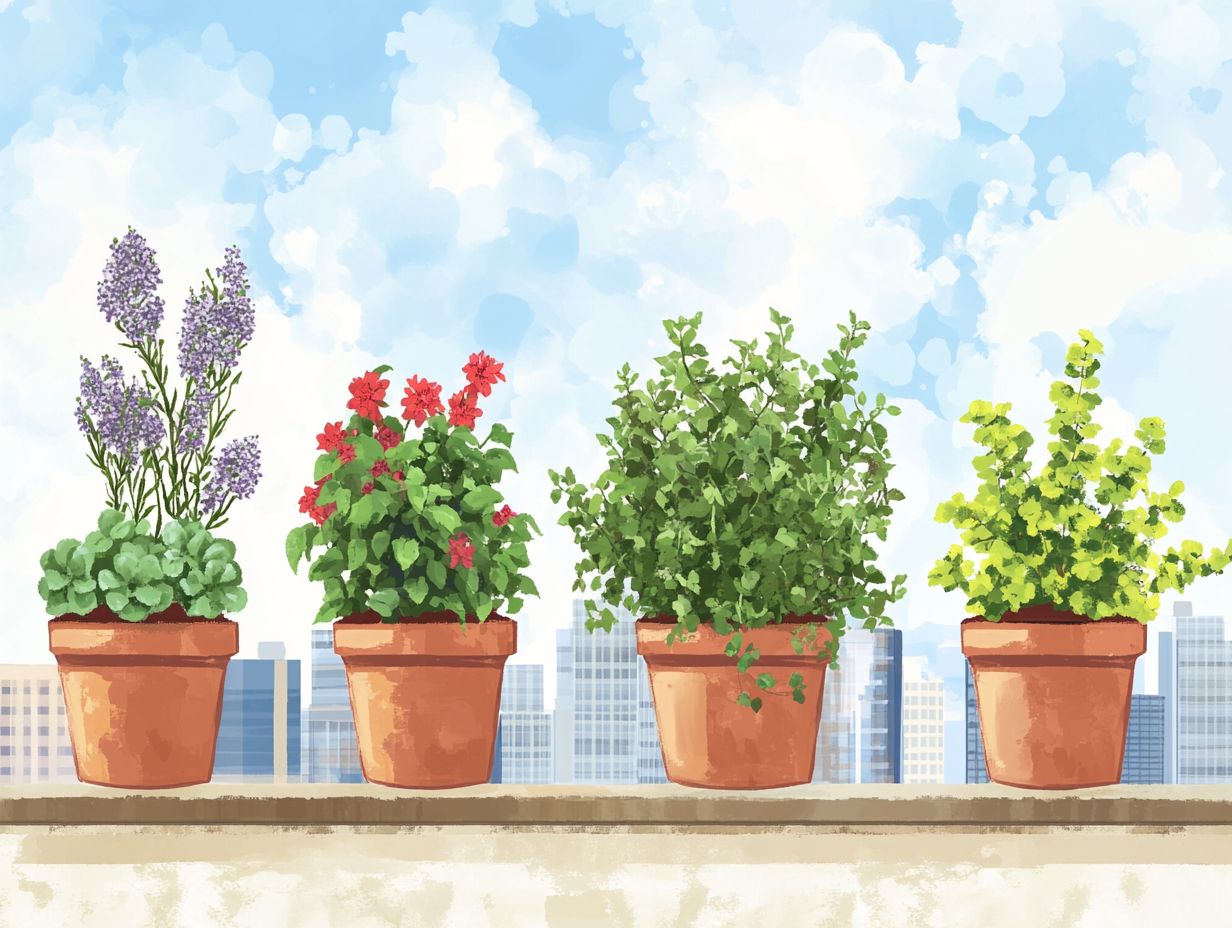
Growing herbs is a great way to add convenience and flavor to your small urban garden. They require minimal space and maintenance.
Succulents are perfect for small urban gardens because they are low maintenance and come in a variety of shapes, sizes, and colors.
Dwarf fruit trees are an excellent option for those with limited space. They provide fresh fruit and add beauty to your garden.
1. Herbs
Herbs are essential elements of any urban garden, providing not only culinary pleasures but also enhancing the visual charm and ecological harmony of compact spaces. They attract wildlife and are friendly to pollinators.
Plants like lavender and sea thrift are particularly adept at thriving in urban settings. They require minimal care while flourishing in pots or small garden beds. Take lavender, for example; its delightful fragrance is a bonus, and it can survive with little water, making it a perfect choice for busy city dwellers.
Then there s sea thrift, with its charming tufty blooms that not only elevate the garden’s aesthetic but also improve soil structure. Both of these herbs make excellent companions for a variety of vegetables, enriching the growing environment and contributing to vibrant, thriving urban ecosystems.
2. Succulents
Succulents are the ideal solution for your small urban garden. They flourish in tight spaces while demanding minimal water due to their incredible adaptability. This makes them a favored choice among urban gardeners.
These resilient plants, including charming varieties like Echeveria, Haworthia, and Sedum, offer a delightful array of colors and textures that can transform any balcony or patio into a vibrant oasis. Their versatility allows you to grow plants in pots easily, no matter the conditions you face.
To craft eye-catching arrangements, consider mixing different types of succulents for added visual intrigue. Place taller varieties at the back, allowing trailing species to cascade gracefully over the edges. Opting for decorative pots can elevate seasonal themes, ensuring your garden remains captivating and fresh throughout the year.
3. Dwarf Fruit Trees
Dwarf fruit trees are an excellent choice for your urban garden, offering delightful flavors without taking up much space ideal for those gardening in compact areas.
These charming varieties, like the petite columnar apple and the delightful fig, not only produce delicious fruits but also bring an air of sophistication to your outdoor spaces. Their manageable size allows for imaginative arrangements in containers, enabling you to craft a lush, edible landscape right on your balcony or patio.
Incorporating these trees elevates the architectural appeal of your urban garden, breaking the monotony of traditional landscaping while boosting biodiversity. You can relish the dual rewards of fresh fruits and visually striking greenery, all without sacrificing your precious square footage.
Start your urban gardening adventure now and transform your space into a green paradise!
4. Climbing Plants
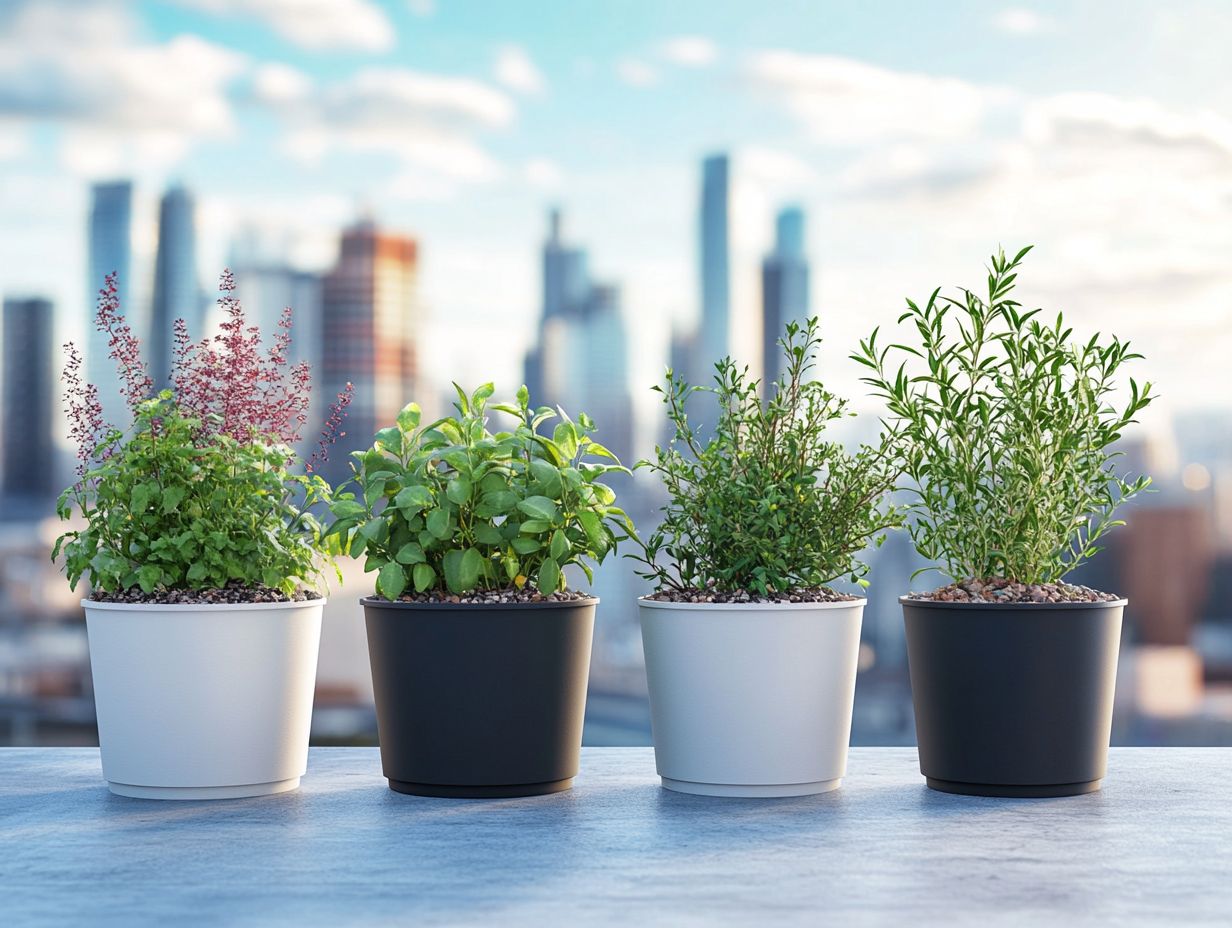
Climbing plants can transform your urban garden’s vertical space into stunning displays. They maximize limited areas while enhancing your privacy beautifully.
Consider varieties like Trachelospermum jasminoides, known for its fragrant star-shaped flowers, or Phyllostachys aureosulcata, a resilient bamboo that adds height and texture. These plants bring seasonal interest with vibrant foliage in spring and breathtaking blossoms in summer.
Try techniques like trellising, wire grids, or repurposed pallets to create dynamic vertical gardens. Not only do these plants enhance your garden s beauty, but they also invite wildlife, offering essential habitats and food sources that enrich urban biodiversity.
This makes them a top choice for eco-conscious gardeners!
5. Vertical Gardens
Vertical gardens provide a transformative approach to urban gardening. They integrate a variety of plant species while adding architectural charm to small spaces.
Incorporate compact plants like trailing vines, ornamental grasses, and colorful flowering varieties. A thoughtfully designed vertical garden with sweet peas and decorative succulents creates an inviting atmosphere and attracts beneficial wildlife!
Use wall-mounted planters or trellises filled with herbs. This setup serves a dual purpose providing fresh culinary ingredients and creating a haven for pollinators. It promotes ecological balance and enhances challenging urban environments.
What Are the Benefits of Having a Small Urban Garden?
A small urban garden offers many benefits. It creates small areas with different weather conditions that nurture diverse plant life and enhances your mental well-being through a direct connection with nature.
These gardens help cool the urban heat island effect and serve as sanctuaries for pollinators and other creatures. The sights and scents of a well-tended garden can lift your spirits and provide a serene retreat amidst the chaos of city life.
Gardening also strengthens community bonds. Neighbors can gather to share tips, exchange produce, and collaborate on projects. The changing seasons invite you to explore and appreciate your garden, elevating the quality of urban living!
How Can One Maximize Space in a Small Urban Garden?
Maximizing space requires innovative strategies like container gardening and vertical gardening. These methods allow you to integrate a variety of compact plants that grow well together.
Use vertical structures such as trellises and hanging planters to make the most of limited ground space. Multi-tiered containers create unique aesthetics and enable you to cultivate several varieties within a small area.
Place plants thoughtfully to enhance sunlight exposure and air circulation. Companion planting techniques can boost your garden’s yields and promote healthy plants by deterring pests and increasing nutrient uptake!
With these strategies, even the smallest urban garden can flourish beautifully!
What Are the Essential Tools and Supplies for a Small Urban Garden?
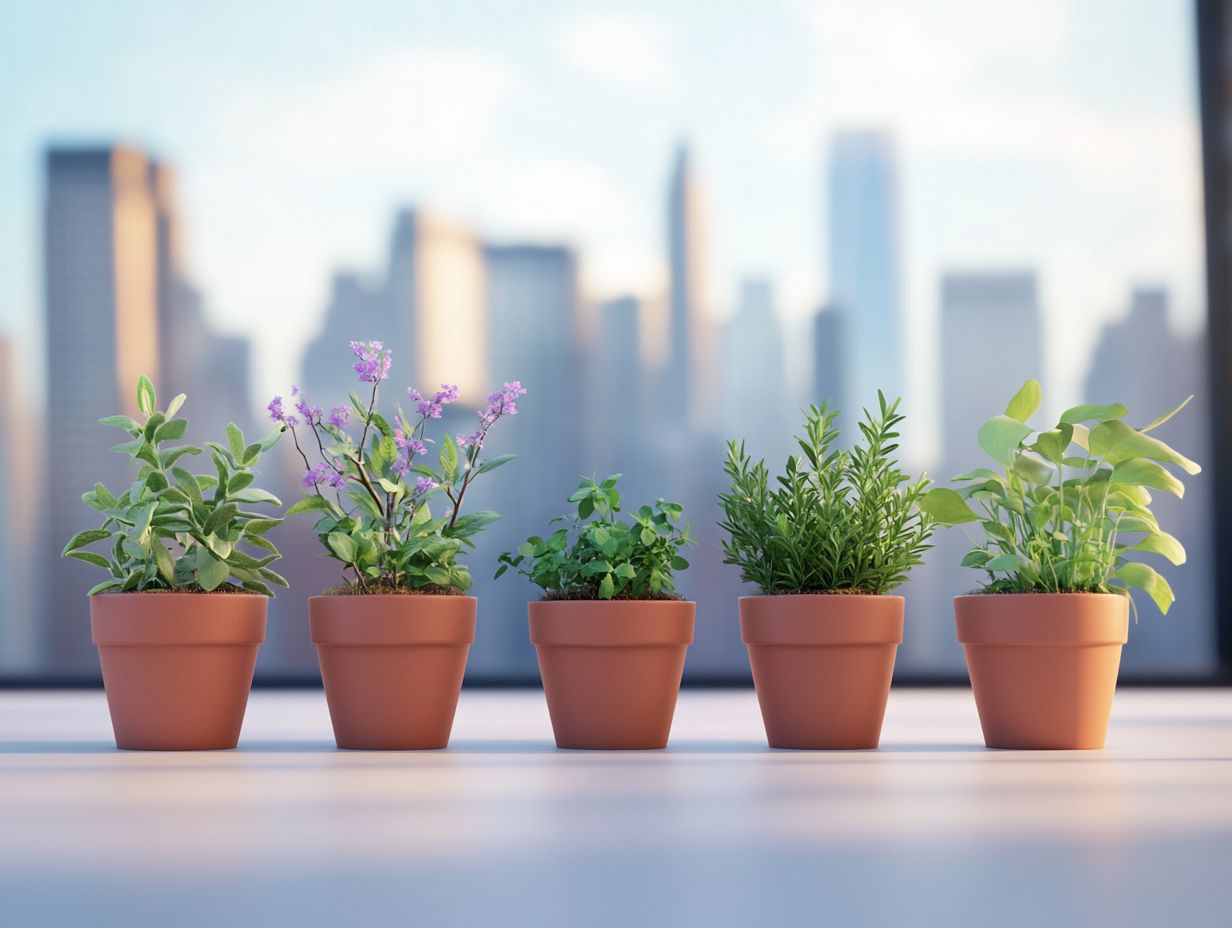
To cultivate a thriving small urban garden, equip yourself with essential tools and supplies for container gardening. This preparation sets the stage for successful growth and maintenance of various plant species.
A sturdy trowel is critical for digging and transferring soil. A reliable watering can ensures your plants receive just the right amount of hydration without risking overwatering. For soil management, a soil tester helps you determine nutrient levels and pH balance to optimize conditions for plant health.
When selecting supplies, choose low-maintenance and drought-tolerant plants. Add organic mulch and lightweight containers to conserve moisture. By strategically utilizing these resources, you can create a flourishing green oasis even in limited space.
How Can One Maintain a Small Urban Garden?
Maintaining a small urban garden requires understanding the unique needs of low-maintenance plants while implementing effective strategies for winter protection. This ensures both sustainability and thriving growth throughout the year.
Establish a reliable watering schedule. Knowing when and how much to water significantly reduces the risks of over- or under-watering. Use methods to control pests to protect your plants from common threats, allowing them to flourish with minimal intervention.
Choosing drought-tolerant varieties makes a considerable difference. These plants need less water and can thrive in less-than-ideal conditions. Preparing your plants for winter through mulch or protective covers boosts their resilience, reducing your demands as a gardener.
This approach makes gardening more enjoyable and manageable, making your experience all the more rewarding.
What Are Some Creative Ideas for Incorporating Plants in Small Urban Spaces?
Incorporating plants creatively into your small urban space can transform a mundane area into a vibrant oasis. This attracts wildlife and provides seasonal interest through innovative design solutions.
Utilize hanging pots and wall-mounted planters to maximize vertical space. Craft an exquisite display of greenery that beautifies your surroundings and invites pollinators like bees and butterflies.
Repurpose materials such as old wooden pallets or tin cans as charming containers. This adds a whimsical touch and promotes sustainability.
These thoughtful designs elevate the aesthetic appeal of your urban garden while contributing to richer biodiversity, creating habitats and food sources for local wildlife.
Embrace these creative strategies to cultivate a thriving ecosystem right in the heart of the city.
What Are the Common Mistakes to Avoid When Creating a Small Urban Garden?
Creating a small urban garden can be incredibly rewarding, but common missteps like poor planning, overcrowding, and overlooking sunlight requirements can impede your success and growth.
Recognize frequent pitfalls, such as improper plant selection and insufficient soil depth, which can impact your garden’s health. Conduct thorough research to understand which plants flourish in limited spaces to save yourself from future disappointment.
Pay attention to environmental factors like light exposure and wind patterns to guide your decisions. This sets the stage for a more productive garden.
Investing time in careful planning enriches your plant selection and ensures that your soil depth is adequate, allowing roots to establish themselves effectively for better yields and resilience.
Frequently Asked Questions
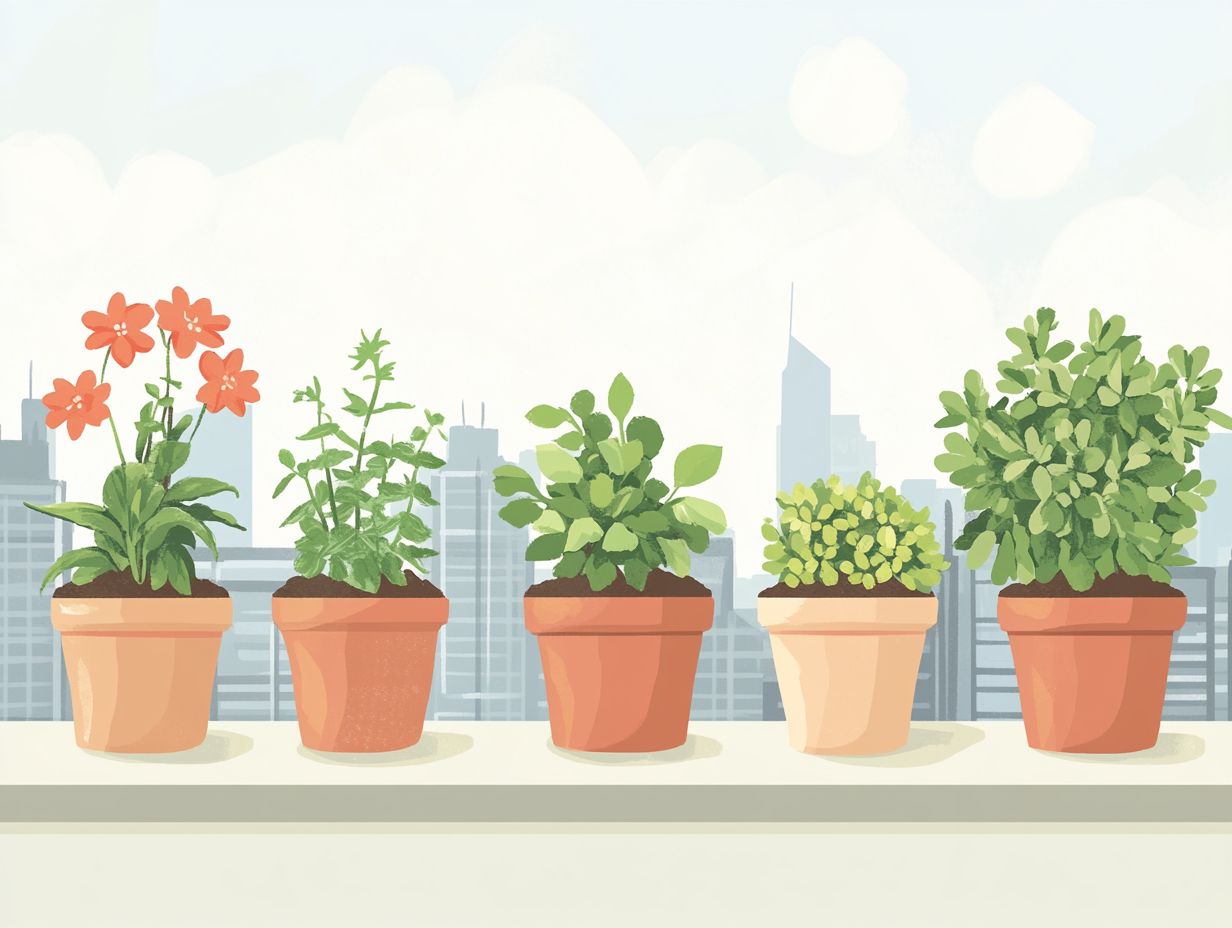
What are the benefits of having a small urban garden?
A small urban garden offers fresh, homegrown produce. It also improves air quality and provides stress relief.
Which plants are best suited for small urban gardens?
The top five plants for small urban gardens are herbs, succulents, dwarf vegetables, flowering annuals, and compact fruit trees.
How can I make the most of my small urban garden space?
Use vertical gardening techniques to save space. Consider containers and plan carefully to maximize your garden area.
Are these plants easy to maintain?
Yes, these plants require minimal care. They are perfect for busy urban lifestyles.
Can I grow these plants indoors?
Yes, most of these plants thrive indoors. Just ensure they receive enough sunlight or use artificial lights.
Do I need special tools or equipment to grow these plants?
No special tools are needed. Basic gardening tools like a small trowel, watering can, and pruning shears will suffice. Potting soil and containers are also helpful for indoor gardening.

